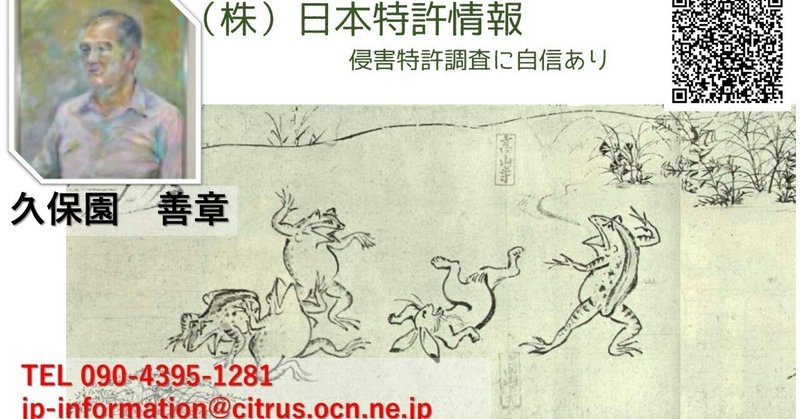
どうする特許庁! 目覚めよ審査官!! お粗末な「審査」(サーチ)による特許付与を、です。
知的財産高等裁判所により、「権利無効」とされたものの60件目です。
https://drive.google.com/file/d/1apZszC1uroARwzuEJciCnSveB2yO-nlx/view?usp=drive_link
特許権者である原告のJX金属株式会社は、自分が保有する特許第4,673,448号(非磁性材粒子分散型強磁性材スパッタリングターゲット)について、その特許の「有効性」を検証したか不明です。
「有効性」とは、自社の特許についての、例えば「無効資料調査」等を行うことで、たとえ利害関係者などの第三者からの「無効審判」を起こされても、自社の特許は盤石であると確信することです。
それにも拘らず、JX金属株式会社は、特許庁より与えられた特許を有効と信じて、被告である田中貴金属工業株式会社を特許侵害している、と提訴しました。
しかしながら、東京地方裁判所と知的財産高等裁判所は「特許請求の範囲の記載は,サポート要件を満たしているとはいえないから,特許無効審判により無効にされるべきであり,本件訂正の請求によっても,無効理由を解消することはできない。」とし、結局、控訴人は敗訴しました。
そして、「したがって,本件特許には,サポート要件(特許法36条6項1号)違反の無効理由があるものと認めるのが相当である。」とし、先行技術文献についての判断はしていないようです。
ここで、被告は、「乙40」(特開2008-163438)と「乙42」(特開2008-169464)、更には「乙43」(特開2009-001860)を先行技術文献として提示しています。
このうち前者の2件は、審査官(村守宏文)が見つけて、WO2010-110033の「国際調査報告書」に提示しています。
しかしながら、特許庁の審査の段階では、審査官は「拒絶理由通知書」を発することなく、「特許査定」をしました。
本件は、東京地方裁判所と知的財産高等裁判所において、上記3件の先行技術文献については判断がされておりません。
東京地方裁判所と知的財産高等裁判所の「特許請求の範囲の記載は,サポート要件を満たしていない」との判断です。
本件の根本原因は、審査官が「サポート要件違反」の有無についての考えが無かったことにあると思います。
特許庁の審査官のサポート要件(特許法36条6項1号)に考慮しない特許付与は許されません。
従って、本来なら、JX金属株式会社の出願に対して、特許庁は特許を与えるべきでなかったと考えます。
「行政」(特許庁)としては、「司法」(裁判所)により誤りを指摘されたことを謙虚に反省し、その誤りを正すことを心掛けるべきです。
特に、審査官が登録調査機関の検索者を指導して作らせている、又は自らが作成していると思われる「検索論理式」の作成を、根本的に改革すべきです。
因みに、上記の「乙号証」3件について、それらの「出願情報」のうち分類(「FI」と「Fターム」)をそれぞれの公報の右欄に付します。
ピンク色を付した分類は本件特許(特開)と共通(重複)するもので、多数あります。
なお、本件特許公開の「出願情報」のうち「FI」と「Fターム」を、本エクセル資料の2シート目以降に挙げておきました。
( Google Translation )
What will the patent office do! Wake up Judge! !
Granting a patent through poor "examination" (search).
This is the 60th case where the Intellectual Property High Court has declared "invalidity".
JX Metals Co., Ltd., the plaintiff, who is the patentee, has verified the "validity" of its patent No. 4,673,448 (non-magnetic material particle dispersion type ferromagnetic material sputtering target). is unknown.
"Validity" means that even if a third party such as an interested party raises an "invalidation trial" by conducting, for example, an "invalid material investigation" for the company's patent, the company's patent is It is to be convinced that it is rock solid.
Despite this, JX Metals believed that the patent granted by the Patent Office was valid and sued the defendant, Tanaka Kikinzoku Kogyo Co., Ltd., alleging patent infringement.
However, the Tokyo District Court and the Intellectual Property High Court said, ``The description of the scope of patent claims does not meet the support requirements, so it should be invalidated by the patent invalidation trial.
Even so, the grounds for invalidation cannot be eliminated." In the end, the appellant lost the case.
It then stated, "Therefore, it is reasonable to recognize that the Patent in question has a reason for invalidation due to a violation of the support requirement (Article 36, Paragraph 6, Item 1 of the Patent Act)."
It seems that. Here, the defendant presents "Otsu 40" (Japanese Unexamined Patent Publication No. 2008-163438), "Otsu 42" (Japanese Unexamined Patent Publication No. 2008-169464), and further "Otsu 43" (Japanese Unexamined Patent Publication No. 2009-001860) as prior art documents. I'm here.
The former two cases were discovered by the examiner (Hirofumi Muramori) and presented in the "International Search Report" of WO2010-110033.
However, at the examination stage of the Patent Office, the examiner did not issue a "notice of reasons for refusal" but "granted a patent".
In this case, the Tokyo District Court and the Intellectual Property High Court have not yet decided on the above three prior art documents.
The judgment of the Tokyo District Court and the Intellectual Property High Court is that ``the description of the scope of patent claims does not meet the support requirements.''
I believe that the root cause of this case was that the examiner had no idea about whether or not there was a "violation of support requirements."
Patent grants that do not take into consideration the support requirements for patent office examiners (Article 36, Paragraph 6, Item 1 of the Patent Law) are not permitted.
Therefore, the JX Nippon Mining & Metals Corporation's application should not have been granted a patent by the JPO.
As the “administration” (the Patent Office), we should humbly reflect on the fact that the “judicial” (the court) pointed out the error, and should try to correct the error.
In particular, we should fundamentally reform the creation of "search logic formulas" that are thought to be created by examiners under the guidance of searchers of registered search organizations, or created by themselves.
By the way, regarding the above three "Certificate Otsu", the classification ("FI" and "F term") of the "application information" is attached to the right column of each publication.
Classifications in pink are common (overlapping) with the present patent (Japanese patent application), and there are many of them.
In addition, "FI" and "F term" in the "application information" of this patent publication are listed after the second sheet of this Excel document.
(Google 翻译)
专利局会做什么! 法官醒醒吧! !
通过糟糕的“审查”(检索)授予专利。
这是知识产权高等法院宣布“无效”的第60起案件。
专利权人原告JX金属有限公司对其第4,673,448号专利(非磁性材料粒子分散型铁磁性材料溅射靶材)的“有效性”不详。
“有效”是指即使利害关系人等第三方通过对公司的专利进行“无效材料调查”等方式提出“无效审判”,该公司的专利仍应被确信是坚如磐石。
尽管如此,JX Metals仍认为专利局授予的专利有效,并起诉被告田中贵金属工业株式会社,指控其侵犯专利权。
然而,东京地方法院和知识产权高等法院表示,“专利权利要求范围的描述不符合支持要求,因此应通过专利无效审判宣告无效。即便如此,无效宣告的理由也不能成立”。被淘汰。”
最终,上诉人败诉。
随后表示:“因此,认定涉案专利因违反支持要件(专利法第36条第6项第1项)而存在无效理由是合理的。
”看来是这样的。 在此,被告提出了“Otsu 40”(日本未审专利公开第2008-163438号)、“Otsu 42”(日本未审专利公开第2008-169464号),以及“Otsu 43”(日本未审专利公开第2008-169464号)。 2009-001860)作为现有技术文件。
我在这里。
前两个案例由审查员(Hirofumi Muramori)发现并在WO2010-110033的“国际检索报告”中提出。
然而,在专利局的审查阶段,审查员并没有发出“驳回理由通知书”,而是“授予专利权”。
本案中,东京地方法院和知识产权高等法院尚未对上述三份现有技术文件作出判决。
东京地方法院和知识产权高等法院的判决是“专利权利要求范围的描述不符合支持要求”。
我认为,本案的根本原因是审查员不知道是否存在“违反支持要求”。
不考虑专利局审查员支持要求(专利法第三十六条第六款第一项)的专利授权是不允许的。
因此,JX日本矿业金属株式会社的申请不应被日本特许厅授予专利。 作为“行政部门”(专利局),我们应该虚心反思“司法部门”(法院)指出的错误,并努力纠正错误。
特别是,我们应该从根本上改革“检索逻辑公式”的创建,这些公式被认为是由审查员在注册检索组织检索员的指导下创建的,或者是他们自己创建的。
顺便提及,对于上述三个“证书大津”,“申请信息”的分类(“FI”和“F术语”)附在每个出版物的右栏中。
粉红色的分类与本专利(日本专利申请)共同(重叠),并且有很多分类。
另外,该专利公开的“申请信息”中的“FI”和“F术语”列在该Excel文档的第二页之后。
この記事が気に入ったらサポートをしてみませんか?
